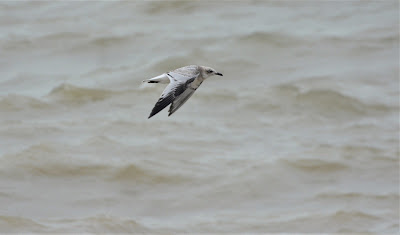July 30th
After Sunday’s superb Great Shearwater by Andy Lawson and a not too bad a forecast for Monday, I headed down there early a.m arriving at the Fishing Boats at 6.00am.
Birds seen en route were Common Buzzard, a hunting Hobby after Sand Martins and a Wheatear which was good.
Settled in watching until 10.00am, very overcast at times but thankfully not much rain, others were present to around 9.00m but totals below is what I recorded.
Bonxie – 1
Common Scoter – 17
Kittiwake – 1
Little Tern – 9 including a flock of 5
Juvenile Mediterranean Gull – 6 always nice to see these
Fulmar – 9
Manx Shearwater – 1
Balearic Shearwater – 1
Common/Arctic Tern – around 120, lot of movement between 9-10am
Sandwich Tern – 23
Gannet – 264, largest flocks around 25 birds, most birds going east.
Swift – 16 east
The first Shearwater seen I must admit I thought was a Manx but on looking at the photos is actually a Balearic, so easy to be wrong in Sea Watching, need to do it more and brush up on my ID.
A little slow and nothing earth shattering in regards to numbers but an enjoyable visit anyway, although standing still for 4 hours with a dodgy knee is not ideal, time I wised up and got a chair like everyone else.
 |
| Balearic |
 |
| France in the distance - Boulogne area I think |
 |
| Little Tern |
 |
| Fulmar |













































